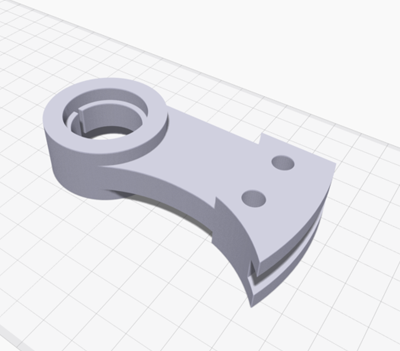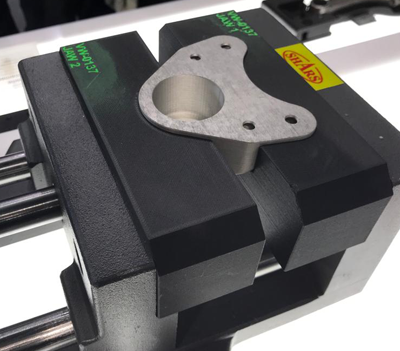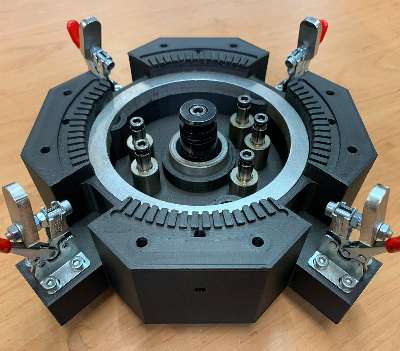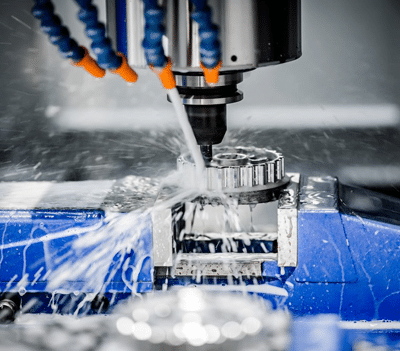3D Printing Materials
[4 minutes reading time]
The Fused Filament Fabrication (FFF) printing process is incredibly adaptable – but it doesn’t work for all plastics. Because of the tight constraints required to precisely extrude plastic from a tiny nozzle, traditional plastics originally optimized for injection molding do not print. However, printable plastics cover a wide range of compositions, printing limitations and material properties. To find the right material, you need to match the requirements of your applications to the properties of the materials you can print with. In this article we discuss the strengths and weaknesses of various thermoplastics.
In addition to printing on thermoplastics, Markforged also adapts the FFF process to print on non-plastic materials. In continuous filament fabrication (CFF), an FFF printer with a specialized second nozzle inserts continuous carbon fibers, fiberglass or Kevlar® into a component. ADAM (Atomic Diffusion Additive Manufacturing) builds on the existing Metal Injection Molding (MIM) technology by using an FFF-based process to print metal powder in a plastic binder. These printed parts are placed in a solvent bath to remove binder material and sintered into fully metallic parts.
Standard thermoplastics With the rapid growth of 3D printing, the variety of print filaments has also evolved. Despite this boom, most 3D-printable FFF thermoplastics can be divided into three categories: Basic thermoplastics, niche thermoplastics and superplastics.
Basic thermoplastics commonly used in 3D printing materials

Basic thermoplastics: These plastics do not yet have outstanding properties, but are still the most popular printing thermoplastics available. PLA, the most common printing plastic, prints well and has good mechanical properties. However, the lack of heat resistance and low durability make it impossible to use in an industrial environment. ABS has excellent heat resistance, but is not very strong and reacts poorly with most manufacturing chemicals. PETG, a polyethylene pressure subset, is a cross between the two: slightly stronger than ABS and slightly more heat resistant than PLA, but still not strong enough for most manufacturing environments.

Niche thermoplastics, which are used as 3D printing materials. Niche thermoplastics have one or two excellent facets, so they can be very useful in certain applications. Nylon is a perfect example. It is neither stiff nor particularly strong and has virtually no heat resistance, but it is extremely durable and has remarkable chemical resistance. It is therefore used in applications where flexibility and durability are most important. TPU (or TPE) is an extremely ductile material that has similar properties to nylon and is slightly more flexible. Polycarbonate is an excellent plastic in many ways – quite strong and heat resistant – but only moderately durable and chemically resistant.
PEEK / Ultem is a “superplastic” 3D printing material.

Superplastics: These materials have all the necessary aspects to be successful in production environments. PEEK and Ultem are both solid, rigid plastics with extremely high heat resistance and chemical resistance. Engineers used them extensively in manufacturing before they were 3D printable and now use printers to create custom, robust fixtures from these materials.
Filled thermoplastics A filled thermoplastic is a material in which a standard plastic is impregnated with tiny particles of a second material. The concentration of the second material can vary, but it is still primarily a thermoplastic in terms of composition and material behaviour. Adding particles of a stronger material to thermoplastics can change many material properties (although chemical resistance still depends entirely on the plastic).
Filled thermoplastics are stored in two warehouses: plastics filled with exotic materials and cut fibre-reinforced plastics. Plastics filled with exotic materials are most similar to niche plastics because their secondary materials (coffee, wood and other materials) change the texture and appearance more than the mechanical properties. In contrast, cut fibre-reinforced plastics use industrial-grade fibres to improve the material properties of thermoplastics. The most common of these is chopped carbon fibre reinforced nylon, a nylon-based plastic impregnated with microscopic carbon fibres.
If you add the right amount of carbon fiber to nylon, a niche plastic becomes a super plastic. The fibers greatly increase strength, stiffness and heat resistance, and the dimensional stability added by the carbon fiber means that plastic printing as well as any FFF plastic exists. 3D parts printed in this material are ideal for a variety of applications and are often confused with non-printed parts. Markforged’s Onyx material is a carbon fibre filled plastic of this type.
Overfilling nylon with carbon fibres results in a completely different material. The additional carbon fibre further increases strength and stiffness, but at the expense of lower print quality. As the concentration of carbon fiber particles increases, the binding thermoplastic cannot flow properly through the printing system, leaving parts with visible defects and rough surface texture. While these materials are remarkable in themselves, they are closer to niche plastics than superplastics.
Filled plastics as 3D printing materials.

Continuous Fiber (CFF)
While chopped carbon fibers are remarkable in their ability to reinforce thermoplastics, continuous fibers can provide far greater strength to components. Markforged uses a combination of FFF printing and Continuous Fibre Fabrication (CFF) to lay long strand fibres in conventionally printed thermoplastic parts.
The video explains the gigantic added value of continuous fiber in a very simple and clear way.

Metals (ADAM)
To print with metal, the Markforged Metal X uses a special form of FFF called Atomic Diffusion Additive Manufacturing (ADAM). Similar to filled thermoplastics, the machine extrudes a filament consisting of a plastic binder filled with small metal powders in a process that is almost identical to FFF. The resulting part is washed to remove binding material and sintered to obtain a metal part. These parts are completely made of metal, but have similar geometric properties to conventional FFF plastic parts. To learn more about the process, see the detail page of the Metal X.
Learn more about 3D printing continuous fibres!
Which continuous fibre is suitable for which applications? How do I design correctly for filament 3D printing? What do users say and where can I find more information? – This is the right place for you! We listed some information leading you directly to the matching answers.




